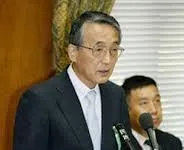
Japan's 15% nuclear option gets public support
The Japanese government's option of reducing atomic energy to 15 percent by 2030 is winning public favor.
The government had planned to compile a new energy policy this month after holding public meetings nationwide to gather opinions on three scenarios for nuclear energy use by 2030: zero, 15 percent, and 20 to 25 percent.
If the government's policy to "basically" limit the service life of reactors to 40 years is strictly adhered to, as stated recently by Shunichi Tanaka, the candidate to head the new nuclear regulatory authority, their number will fall to 20 from 50 by 2030.
If the remaining reactors operate at 80 percent of capacity and no new ones are built, nuclear power would account for 15 percent of Japan's total energy supply. In fiscal 2010, the figure stood at 26 percent.
Given that the 15 percent option can be achieved simply by decommissioning reactors once they reach the 40-year limit, Environment Minister Goshi Hosono also has indicated his support, calling it a base scenario.
"We should strictly check nuclear reactors and not allow those beyond 40 years old to operate," Tanaka, a former vice chairman of the Japan Atomic Energy Commission, told members of the Lower House Steering Committee on Wednesday.
The 20 to 25 percent scenario — favored by the power industry — requires new reactors and would do little to change Japan's reliance on atomic energy from levels seen before last year's meltdowns at the Fukushima No. 1 plant. It may also face strong public opposition as protests against nuclear power snowball.
Meanwhile, abolishing atomic energy altogether is expected to raise household electricity bills following the launch in July of a system requiring utilities to purchase all power generated from solar and other renewable energy sources at preset premiums, with permission to pass the costs onto consumers.
For more.








![Cross Domain [Manu + SBR + ABF + ABR + FMCG + HBR + ]](https://cmg-qa.s3.ap-southeast-1.amazonaws.com/s3fs-public/styles/exclusive_featured_article/public/2025-01/earth-3537401_1920_4.jpg.webp?itok=WaRpTJwE)
![Cross Domain [SBR + ABR]](https://cmg-qa.s3.ap-southeast-1.amazonaws.com/s3fs-public/styles/exclusive_featured_article/public/2025-01/pexels-jahoo-867092-2_1.jpg.webp?itok=o7MUL1oO)









 Advertise
Advertise


